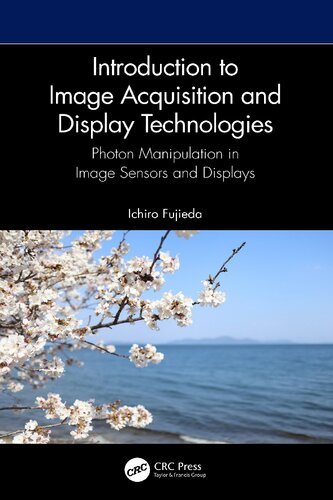

Most ebook files are in PDF format, so you can easily read them using various software such as Foxit Reader or directly on the Google Chrome browser.
Some ebook files are released by publishers in other formats such as .awz, .mobi, .epub, .fb2, etc. You may need to install specific software to read these formats on mobile/PC, such as Calibre.
Please read the tutorial at this link: https://ebookbell.com/faq
We offer FREE conversion to the popular formats you request; however, this may take some time. Therefore, right after payment, please email us, and we will try to provide the service as quickly as possible.
For some exceptional file formats or broken links (if any), please refrain from opening any disputes. Instead, email us first, and we will try to assist within a maximum of 6 hours.
EbookBell Team

5.0
70 reviewsIn this valuable reference work, Ichiro Fujieda focuses on the component technologies, device configurations, and operation principles of image acquisition and display technologies and provides detailed use cases to give practical guidance on the various current and potential future applications of these technologies.
The technology and the physics behind these devices can be grouped into three categories: optical technology, material science, and semiconductor device technology. This book enables readers to gain an understanding of these three areas in relation to the flow of image information and several example applications of the technology. Fujieda first describes the building blocks of image sensors and displays (detectors, light sources, transistors, and wavefront control devices) and their configurations, operation principles, and characteristics. He then describes in more detail image sensor technology (including MOS image sensors, CCD technologies, and X-ray and infrared imagers) and displays (including thin-film transistor arrays, LCDs, OLEDs, MEMS devices, and more). Finally, he provides real-world examples of how these technologies are used together to give the reader an understanding of their practical applications and their potential use in future devices. Some important laws in optics and definitions in color science are included for easy reference. Through this approach, the reader will gain a detailed understanding of each of the component parts of existing imaging devices and will be able to apply this to future developments within the field.
This book will benefit any advanced undergraduate and graduate student and industry professional who wishes to expand his or her understanding of the hardware handling digital images. Some basic knowledge is required on semiconductor device physics and the interaction of radiation with matter, though these are described in the appropriate sections.